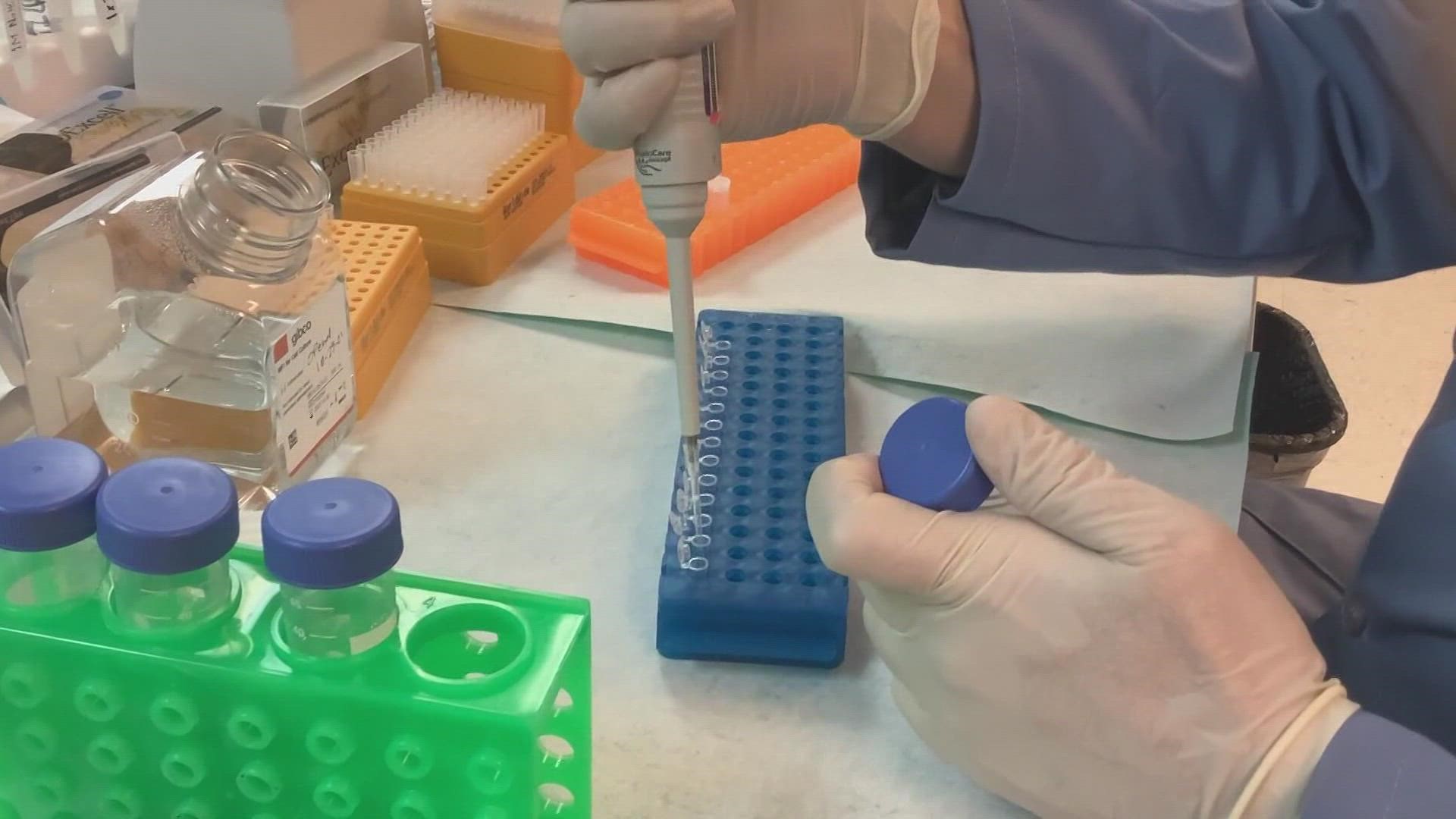MIDLAND COUNTY, Texas — Recently the Texas Rangers were able to identify the remains of Sylvia Nicole Smith, a 16-year-old girl who had gone missing in 2000.
Her identification was made possible through the help of DNA testing, nearly a decade after her remains were found in 2013 near an oilfield in Midland.
For the past four year now, Chief Genetic Geneologist with Parabon, CeCe Moore, has been working alongside law enforcement to help identify missing persons' remains and solve cold cases using a method called Genetic Genealogy.
"We’re using a type of DNA called autosomal DNA and we inherit 50% from each of our parents. About 12 1/2% from each great grandparent," said Moore.
Solving crimes starts with a sample of DNA from the victim's remains.
"For these cases we have to start from scratch and we have to re-analyze the biological material from the beginning. We have to go back to that original biological sample, get that DNA and re-analyze it using these more advanced techniques," said Moore.
Once they have the victim's DNA, they can slowly reverse-engineer a family tree.
"When we’re working on say a Jane Doe case we’re first gonna try to identify her ancestors based on who she shares DNA with, and then as we move forward we’re gonna get closer and closer to the present and start looking at those families and saying 'Is there anybody in this family that we don’t see any recent records for?' and that’s exactly what happened with this Texas Rangers case. We finally got close enough to the family to realizing this woman was missing," she said.
This process can also be a long one, meaning it can take time before families get answers.
"We have some cases that have taken us years and this recent Texas case was especially challenging because one of the factors that we have to consider when working a case is population group, and because she was African American we have less representation in the databases we access," said Moore.
Her team doesn't use popular databases like 23&Me or Ancestry.com but the two smallest databases, which is another challenge.
"We’re limited to the smallest direct consumer DNA testing company database which is Family Tree DNA and there’s a 3rd party site called GED MATCH. Once it’s uploaded it’s compared against everyone in that database and then we get a match list, so the match list will have people who share what we consider significant amounts of DNA with that unknown person," Moore said.
After the DNA is run through the databases, the investigation begins.
"Once we have made that determination we’re moving to public records, we don’t have access to anything anyone doesn’t. We only have access to what the public does. So we’re really not spending too much time with the DNA, it’s all about those public records," said Moore.
These records include census records, newspaper archives, obituaries and social media.
"Social media is a huge part of our being able to piece these families back together and figure out who’s who, where everyone is and if there’s someone in that family missing," said Moore.
Digging through all of this gathered information eventually points them to a match.
"It took a long time in this case to get down to that family. But once we did we were able to determine there was a missing daughter," said Moore, "as sad and heartbreaking the resolution is in these cases it does at least provide answers to the family."

